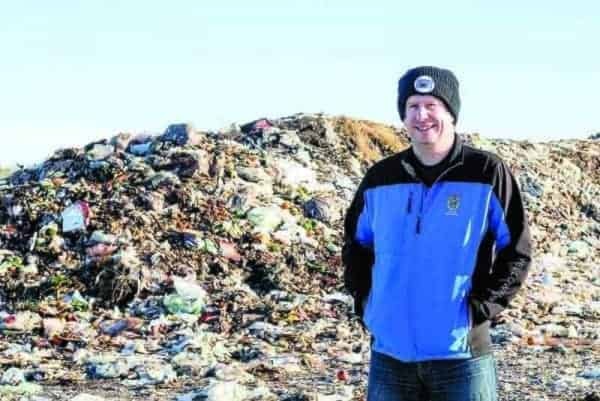The city's curbside organics collection program will expand to downtown single-family homes this summer.
This is the final neighbhourhood to get service before the city eventually adds businesses, apartments and industrial sites.
It means every standalone house in the city should have both a black garbage bin and green compost collection bin by the end of the summer or fall, said Mike Auge, the city's manager of sustainability and solid waste in an interview earlier this month.
About 685 carts will be distributed along with smaller kitchen collection bins. It will bring the number of green carts in the city to around 3,800. Compost is collected by the same city contractor as garbage - Kavanaugh Waste Removal Services - but on alternating weeks.
The city began rolling out green carts in 2014 in the Range Lake and Frame Lake South neighbourhoods and has added several others over the years since then.
Auge stressed it's important to not to put garbage in the green bin because it ends up causing issues at the solid waste facility where the compost is delivered, resulting in someone needing to pick the material out of the pile.
“The most common offender is plastic bags – not using the right type of compost bags – but they've found everything in there over the years. There was a TV found in there once.”
The city doesn't impose fines for improperly sorted waste.
“At the moment that's a little too hard for us to monitor and enforce but I will say that's the way it's going in Yellowknife and everywhere in the world,” he said. “The cost of landfills and garbage is outrageous when you can do other stuff with it and the environmental effects are incredible.”
When new parts of the city are added, he said city staff will go around checking the green bins and will leave a tag on the bin if there's something wrong.
“The residents learn pretty quickly what they can and can't do,” he said.
The city is looking at adding cameras to the contractor's collection trucks that would scan loads of compost as they get in the truck that could be used for enforcement purposes.
Goal to improve environment, save money
The goal is to divert organic waste from other garbage to keep it from ending up in landfill cells.
These cells are areas built to contain garbage for years and cost millions to build. The city's newest cell cost $3.5 million and is expected to take in waste for seven years before another new cell is needed, Auge said.
“Any organics we can take and turn into compost, it's reducing greenhouse gas from what the landfill itself produces and it's taking up less space in the landfill, which is huge from a financial standpoint,” he said. “Anything we can keep out of there benefits us greatly.”
The collected organic material is placed in piles on a pad in a separate area of the solid waste facility. It is turned over as it decomposes and is transferred to other piles until it becomes compost.
More than 376 tonnes of organic material was brought to the solid waste facility last year, according to regulatory filings. About 8.9 tonnes of garbage had to be removed from the compost.
More than 21 tonnes of “black gold” compost was produced last year but there were no public sales of the material. Some of it was used by the city.
Curbside recycling ruled out
The city has considered curbside recycling in the past but ended up going with the current collection system where people take their materials to several large bins at sites throughout the city.
Part of the issue is the city's contractor uses trucks that use automation to grab the black and green bins and dump the contents in the truck.
“It's great for the green bins. If you're throwing all of your recycling into the same bin – cardboard, paper, glass – and it's getting tossed into the same location, that means you need somewhere to sort it,” Auge said.
So the options were to have residents sort themselves and drop off at collection sites or building a new sorting facility and hire more staff.
“It isn't reasonable here, especially with the automated system,” Auge said.
